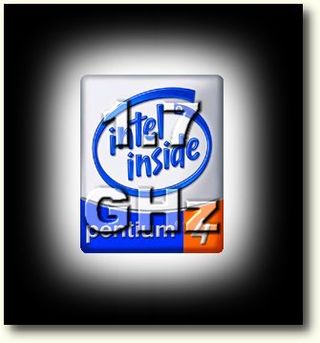Intel Pentium 4 1.7 GHz: More Power For Less Money
Introduction

It's not too long ago that AMD released the Athlon 1333 processor , which was able to take over the crown for the fastest PC-microprocessor in the vast majority of benchmarks. This situation wasn't as much of a big issue, since the previous holder of that crown had been AMD's Athlon 1200. Intel's Pentium 4 1.5 GHz may have a higher clock speed than both AMD processors, but its design wouldn't let it perform particularly well in today's applications. To make matters worse for Intel's flagship processor, it used to come at a clearly higher price than AMD's Athlon and it is restricted to the expensive as well as unpopular RDRAM memory. To ease this pain, Intel has so far supplied amounts of 128 or 256 MB of this memory type together with Pentium 4 processors or sponsored OEMs with $60 of the RDRAM costs. This situation will change today, as Intel is making another very significant price cut, while reducing the RDRAM-sponsoring to only $30 only for Pentium 4 processors at 1.4 GHz and more. The Pentium 4 1.3 GHz fell out of the RDRAM sponsoring program completely.
Making Pentium 4 More Popular
Rumor has it that Intel's processor sales have plunged in the last few months, which is mainly due to problems selling Pentium 4. So besides putting tons of marketing money in TV-ads showing blue guys that build up an orange Pentium 4 logo, Intel needs to tackle the three reasons behind Pentium 4's poor success:
- Unsatisfying Performance
- High Costs Of Processor And Platform
- Expensive And Unpopular Memory Requirement
Intel is working on all three of these problems. The release of Pentium 4 1.7 GHz should definitely ensure a reasonably well performing Pentium 4 model. The next action is significant price cuts, which will be particularly easy for Intel once the next-generation Pentium 4 ('Northwood' core) will be released, because it will be a shrunk (and thus cheaper to produce) version of the current 'Willamette' core. The long-awaited alternative to the ill-received RDRAM-memory will take longest. The second half of 2001 will hopefully see the Brookdale-chipset for Pentium 4, with SDRAM as well as DDR-SDRAM support.
The approach is as simple as it is powerful and therefore most likely successful. Even the fastest Pentium 4 processors are getting a lot cheaper and thus much more attractive. Intel can continue to hype Pentium 4 as the processor of the future, but people won't have to pay a large premium for it anymore. AMD will have to react with price cuts as well, unless it wants to lose market share.
Stay on the Cutting Edge
Join the experts who read Tom's Hardware for the inside track on enthusiast PC tech news — and have for over 25 years. We'll send breaking news and in-depth reviews of CPUs, GPUs, AI, maker hardware and more straight to your inbox.
Most Popular

